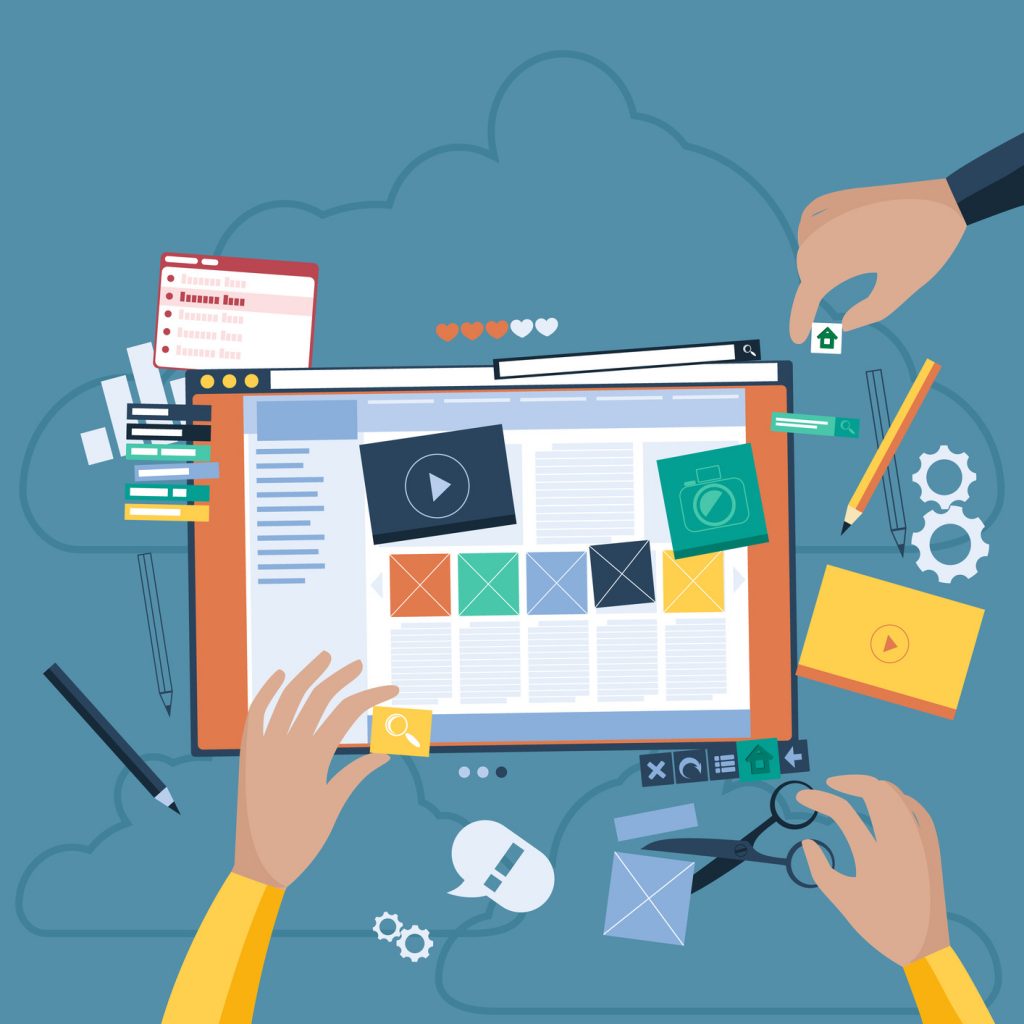Have you ever wondered what to put on your home page?
After completing a survey on my website to determine the page that people are struggling the most, I discovered that it’s the home page that business owners need to the most help with. And recently, it’s been an interesting evolution for website home pages because they are starting to resemble landing pages. The reason is because landing pages convert better than traditional home pages and inside pages, so that’s why there has been a shift.
Landing pages were originally created for pay-per-click ad campaigns to minimize the options for people and to increase leads. They typically either don’t have a menu at all, or the menu is moved to the bottom of the page with minimal options. They also have these elements listed below…
Here are the typical components of a home to create content for:
Main Menu
The main menu is typically five or less menu items that are usually the top questions that people would have on your site like: about, products/services, get started, portfolio/results, contact and the blog. Anything other than that is better off in the footer including: privacy policy, terms & conditions, careers, support, FAQs, social media icon links, etc.
Headline
At the top of your home page, you’ll need a headline that captures the interest of your target audience to help lead them into the content for the rest of the page. Under the headline, you can insert some descriptive text as well to help pull them into what you offer. This would be a quick description of what you do.
Features/Services
If you have a product, the next thing you’d want to do is break out the product features into a short paragraph for each one to explain what each one does and how it can benefit your target market. If you have a service, you can illustrate the core benefits that your customers experience while working with you. Each service is also described in a short paragraph, just like product features would be.
Quote(s)
Your home page is a great place to display a quote from the founder or a happy customer if that fits into your core message. It can be displayed graphically in keeping with the design of your home page.
Blog Snippets
Inserting a few of your most recent blog posts is a good way to engage people visiting your home page with your content. Each article would display the featured image, the headline and a snippet of about 200 characters of the article.
Call to Action
I would also recommend using a call-to-action button about two or more times on your home page depending on how much content you have on the page. This enables you to insert the button towards the top and at the bottom, and in the middle if the page is lengthy. The call to action is the next step that you want people to take including a consultation, a free trial, etc.
Another call to action that is effective for people who don’t know you very well yet, and who aren’t ready to commit yet is the use of something called a lead magnet. Lead magnets originally started out as eBooks or newsletter subscriptions. Those were popular a few years ago, but now people need more condensed information like checklists, swipe files, tools, etc that they can consume quickly. This means that a newsletter subscription is not as attractive as it used to be. Instead, you want to use a lead magnet to help inspire people to sign-up for your newsletter. Not just the newsletter alone.
It’s best to use an opt-in headline when you’re promoting your lead magnet, a button and an image of your lead magnet if possible. Some websites are using software such as Thrive Leads to provide a pop-up or slide-in to encourage people to sign up for their lead magnets too. This is a good option for you to consider once you’ve created a lead magnet that will help your potential customers.
Additional Headlines
If you have multiple headlines that help explain your product/service, you can use full width image sections on the home page to callout different audiences and feature more of your benefits.
Building Trust
If you’ve had good media exposure, it would be ideal to place trusted media logos at the bottom of the home page above the footer that demonstrate your authority in the market. If you’ve been interviewed by magazines, TV stations, famous bloggers, etc it would be excellent to illustrate those connections to show people that you’re a leader in your industry. The logos can also be of high profile clients if applicable. As an alternative, you can use them as a section divider between sections of your home page as well if your logos are REALLY noteworthy.
Video
If you have a feature video for your business, this belongs on your home page as well. It’s not critical, but something that’s good to work towards as your business matures so people can really get a feel for your product/service.
Responsiveness
The trend in website visitors is moving towards smart phone and tablet usage which makes it important for website home page to be responsive. If it’s not, you’ll be creating a frustrating customer experience for your visitors and your conversion rate will decrease.
Moving Forward
Once your home page is created, the next step is for you to create traffic to your website. That is most commonly done through pay-per-click advertising which is an area that we specialize in. If this is of interest to you, contact us today for a complimentary consultation.

